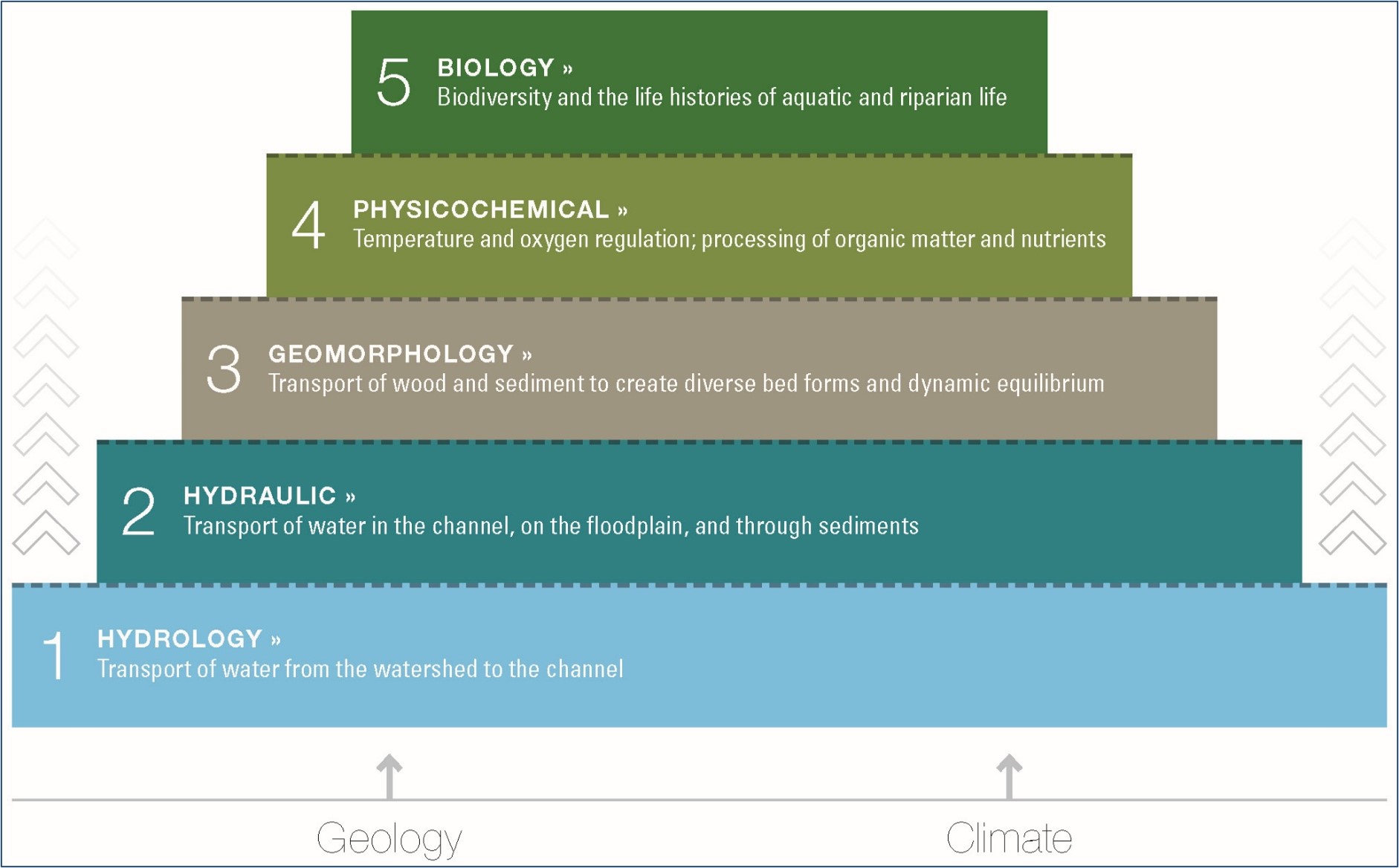Stream Functions Pyramid and Quantification Tool Workshop
This course is for individuals involved in stream assessment and restoration/mitigation projects and provides a framework for assessing stream functions. Participants will learn that stream functions follow a hierarchical structure, which has been organized by the following categories: hydrology, hydraulics, geomorphology, physicochemical and biology. The course starts with lectures and exercises on stream functions following the Pyramid Framework and then moves into applications. Participants will work with function-based parameters, measurement methods, and associated performance standards.
Participants will also work with the Stream Quantification Tool (SQT) to calculate the difference between a restored and existing stream condition. Field data will be collected (or provided for the online version) and entered into the tool to determine the existing condition. Participants will then model the proposed condition to calculate functional lift.
Learn how the framework can be used to:
- Assess stream condition following the five functional categories,
- Develop function-based goals and objectives,
- Determine restoration potential,
- Calculate the difference between pre- and post-restoration (or impact) condition,
- Operate a Stream Quantification Tool
Course dates:
Nothing Scheduled At This Time

- Members of Interagency Review Teams, In-Lieu Fee Providers, and Mitigation Bankers
- Federal, State and Local Agencies with regulatory responsibilities
- Stream restoration practitioners
Note: This is not an introductory workshop. Anyone can take the course, but people new to fluvial forms and processes may find the course challenging.
Will Harman, PG
With 30 years of experience in fluvial geomorphology and stream restoration, Mr. Harman has designed hundreds of projects throughout the United States, which represent a wide range of conditions and challenges.
Mr. Harman spent the first half of his career working for North Carolina State University’s Cooperative Extension Service where he served as the state’s first Natural Resources Extension Agent. Later, he worked on campus where he co-founded the NC Stream Restoration Institute, now the NC Stream Restoration Program. At the university, Mr. Harman co-developed the River Course workshop series, led applied research projects, and completed stream restoration demonstration projects throughout the state.
Mr. Harman has spent the second half of his career in the private sector as a practitioner and educator. He has completed watershed assessments, stream assessments, and design projects throughout the United States, including Alaska. Mr. Harman is currently the owner of Stream Mechanics where he focuses on improving stream restoration and mitigation through the development of assessment and design-review tools. He developed the Stream Functions Pyramid Framework, which is being used by federal and state agencies, and private companies throughout the nation to implement function-based restoration projects. More recently, he co-developed a Stream Quantification Tool (SQT) to measure functional lift from stream restoration projects and functional loss from permitted impacts. The SQT is being used by mitigation programs to determine debits and credits.
Mr. Harman has a Bachelor’s degree from Appalachian State University in Geography and a Master’s degree from the University of North Carolina at Charlotte in Geography. He is a licensed geologist in North Carolina.
Paxton Ramsdell
Paxton is a natural resource professional with experience in state and federal policy, corporate sustainability, and landowner incentive programs. During his career, Paxton has worked with NGOs, state agencies, and private landowners to advance land conservation and habitat restoration. Prior to joining EPR, Paxton worked as a part of the team that developed the first SQT in North Carolina. At EPR, Paxton works with clients to regionalize the SQT and Debit Calculator and contributes to stream restoration projects. Paxton has a Bachelor’s Degree in Government from Hamilton College and a Master’s of Science in Forest Resources and Environmental Conservation from Virginia Tech. Paxton is based in EPR’s Raleigh, NC Office.
Cidney Jones, PE, CFM.
Cidney has 14 years of experience in stream restoration design, hydrologic and hydraulic analysis, stream restoration, and stream assessments. She received her Bachelor’s Degree in Engineering from Harvey Mudd College in 2010 and her Master’s Degree in Civil Engineering from Pennsylvania State University in 2013. She started assisting with the field days for the Stream Function Pyramid Framework courses in 2017 and has since been teaching and leading workshops and field training across the U.S. She has experience performing and providing instruction for hydrologic and hydraulic modeling; field surveying; geomorphic assessments; and GIS mapping and analyses. She is the co-developer of the Stream Quantification Tool and works with states to regionalize the tool.
